One of the world’s longest undersea tunnels, the Eurotunnel has connected the UK to the rest of Europe for the last thirty years, with over one million freight trucks and nearly 10 million passengers passing through each year, according to Getlink, the company that owns and operates the tunnel.
Marking the 30th anniversary of the opening of the tunnel on Monday, French President Emmanuel Macron said: “Thirty years ago the Channel Tunnel finally linked the United Kingdom and France. This feat brought people closer together, gave new impetus to our trade and confirmed the strength of our political relationship.”
People first began fantasising about a tunnel under the English Channel as early as 1802, but the dream did not become reality until nearly two centuries later.
A first project was launched in the 1970s, but was soon abandoned. Then in January 1986, Mitterrand and British leader Margaret Thatcher officially signed an agreement to kick-start construction.
A prodigious industrial adventure, the project mobilised 12,000 engineers, technicians and workers to create the world’s longest underwater tunnel over nearly 38 kilometres (24 miles) from northern France to southern England, earning it the “Global Engineering of the Century Award” by the International Federation of Consulting Engineers.
November 27, 1990 – Technicians work on the construction site of the Channel tunnel in Sangatte, northern France.
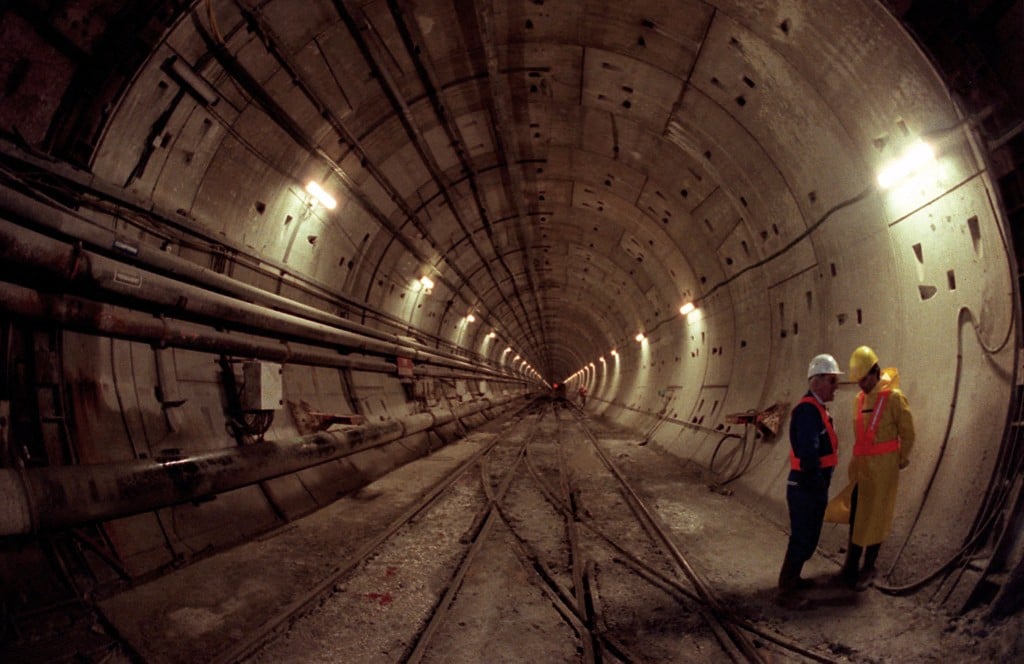

Difficult construction
Construction lasted six years, cost some 15 billion euros and saw workers dig three tunnels — one for each direction and one in the middle for service work.
Vehicles can only cross the tunnel on board a rail shuttle, “as it is very difficult to ventilate a tunnel (…) Over a length of 50 kilometres, it’s nearly impossible,” said Michel Levy of the Setec engineering group, who worked on the project.
The huge, 1,000-tonne tunnel boring machines that dug through the ground got off to a slow start on the French side due to difficult terrain and were slowed down by water infiltrations on the British side.
December 1st, 1990 – The two sides finally meet. French engineer Philippe Cozette (R) poses with a piece of chalk, shortly after the historic breakthrough in the Channel Tunnel.
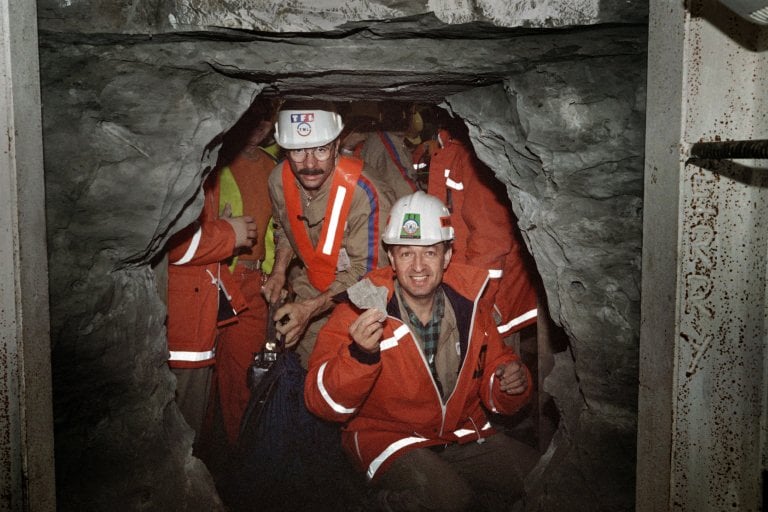
Financial Problems
The building of the tunnel was overshadowed for years by financial problems that almost tore apart Eurotunnel, the company contracted to manage and operate it until 2086.
At the end of 1987, before work on the tunnel kicked off, hundreds of thousands of eager, small shareholders bought Eurotunnel shares in the belief that these were solid, safe investments.
But colossal debt, disappointing traffic and quarrels between shareholders and management nearly sank the company over the years.
May 6th, 1994 – French President François Mitterrand welcomes Queen Elizabeth II shortly before the inauguration of the Channel Tunnel, on May 6, 1994, in Coquelles, Pas de Calais.
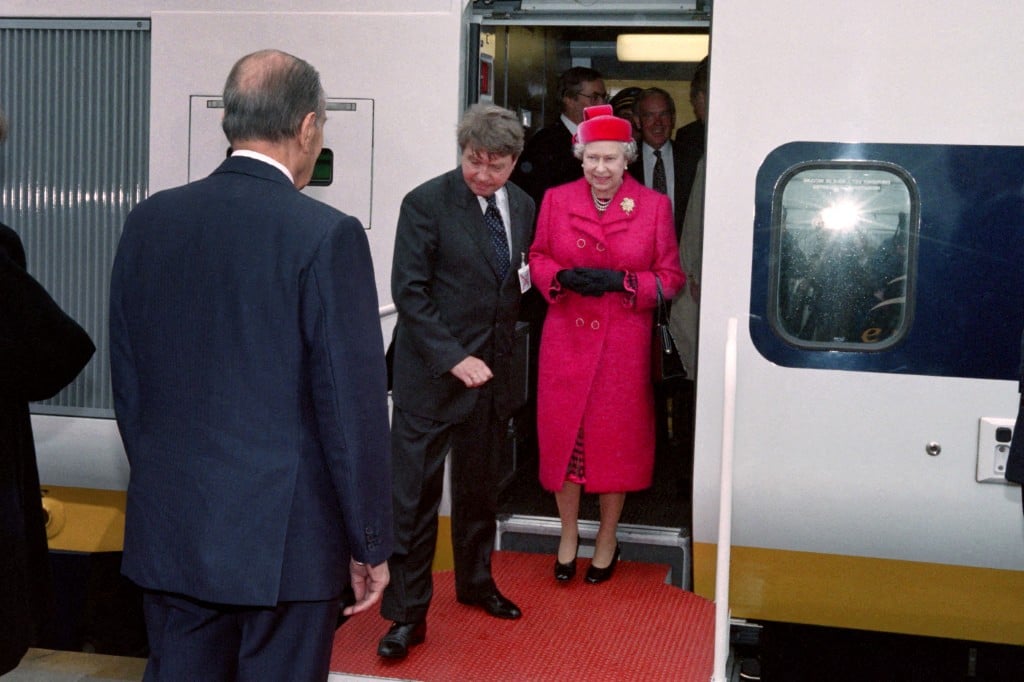
French President François Mitterrand and Queen Elizabeth II cut the ribbon during the inauguration ceremony.
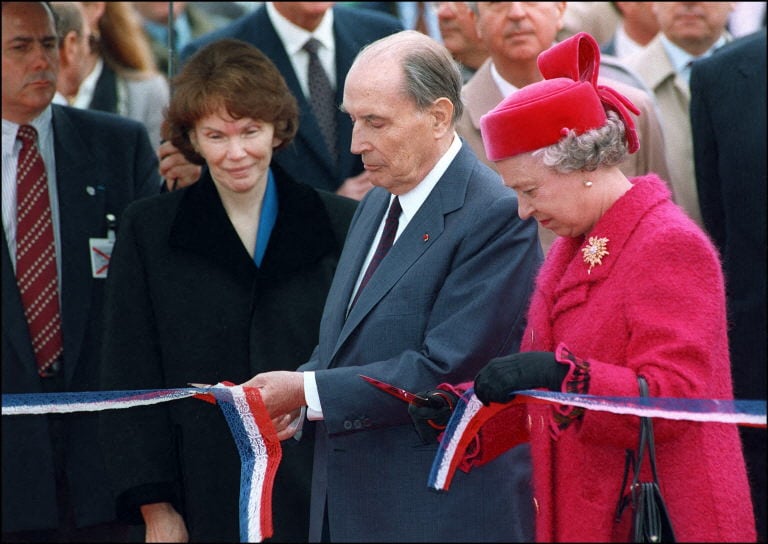
November 14th, 1994 – The train driver for the first TGV ‘Eurostar’ looks out the window as he prepares for departure from Paris Gare du Nord, on the opening day for services between Paris and the Waterloo International station in London, as well as Brussels-South railway station.

August 28th, 2009 – A British Queens’ Guard stands near a Eurostar train at the Gare du Nord station in Paris, after a ceremony for the boarding of British David Kemp, the 100.000.000th Eurostar passenger since the opening of the English Channel tunnel in 1994.
Kemp was symbolically decorated by the former SNCF president, Guillaume Pepy, as “Lord of Eurostar” and he received a ticket for unlimited travel for one year on the Eurostar lines.

June 5th, 2014 – Britain’s Queen Elizabeth II unveiled a plaque commemorating the 20th anniversary of the Channel Tunnel.
At the time, the tunnel more than 330 million passengers and 65 million vehicles had gone through the tunnel since it opened to the public in 1994.



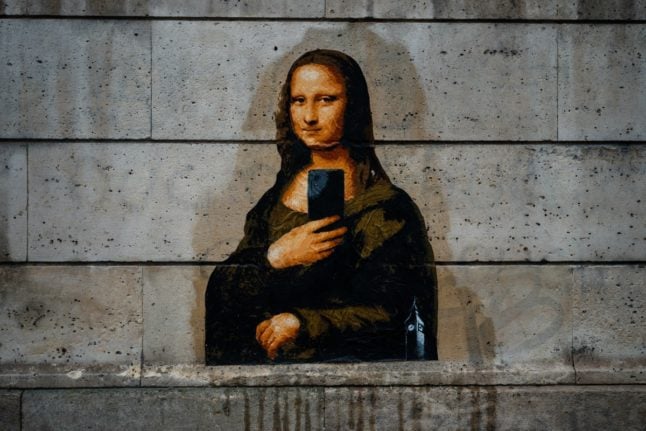

 Please whitelist us to continue reading.
Please whitelist us to continue reading.
Member comments